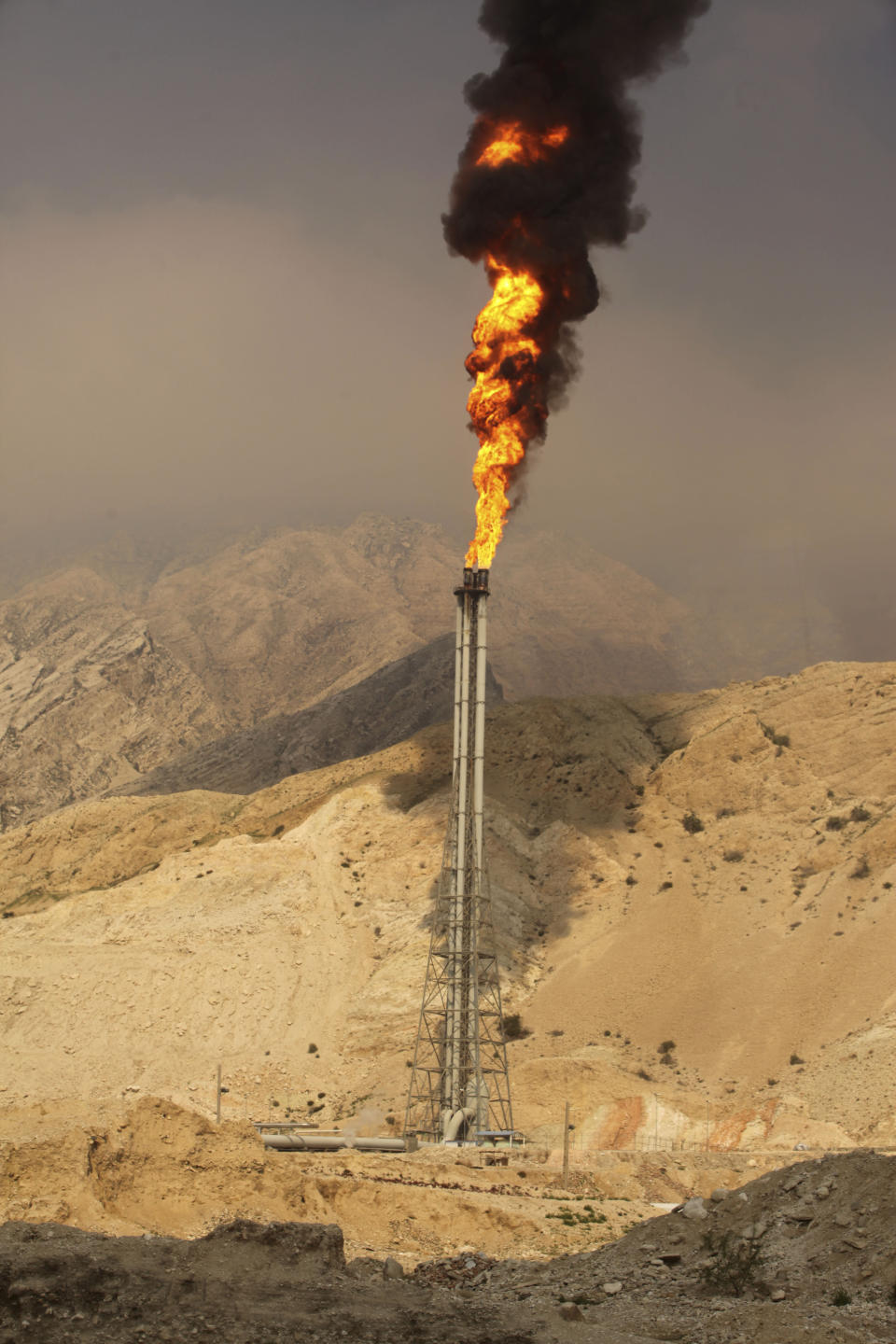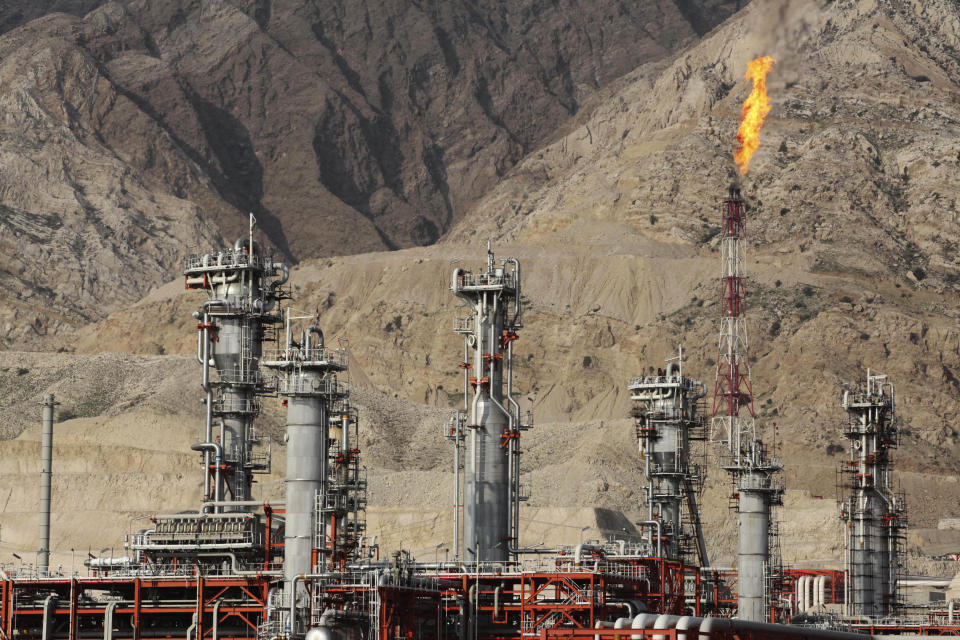Eyeing investment, Iran shows off its gas sites
ASALOUYEH, Iran (AP) — Weathered Iranian workers toil in a labyrinth of snaking pipelines, storage tanks and workshops as gas flares burn brightly in the sky off the northern coast of the Persian Gulf. Dozens of oil tankers idle in the distance.
This is Asalouyeh, the main town serving Iran's South Pars, an immense natural gas field it shares with Qatar. New parts and equipment could help Iran sell natural gas from this field to China and Europe, but international sanctions over the Islamic Republic's contested nuclear program have delayed development.
Now, with a six-month deal in place easing sanctions as Iran negotiates a final deal with world powers, the government is hoping to draw international investment to the field to spur its production.
"If sanctions ease, our ordered parts, blocked abroad, could be released and the project will go online sooner," said Hamid Reza Masoudi, the chief engineer supervising work on a refinery here. "Foreign investment is definitely needed."
Masoudi spoke during a tour for international journalists put on by Iran's oil ministry to show off partially completed natural gas plants and other facilities at South Pars, also known as the North Dome. President Hassan Rouhani has said that Iran plans to sharply increase production from the gas field by 2017.
Iran sits on the world's second-largest natural gas reserves after Russia. The South Pars gas field has an estimated 14 trillion cubic meters (494 trillion cubic feet) of natural gas — about 8 percent of worldwide reserves — and more than 18 billion barrels of liquefied natural gas.
Iran currently produces about 300 million square meters (3.2 billion square feet) of gas a day from the field. It hopes to boost that output by another more than 100 million square meters (1 billion square feet) a day this year and ramp up production of condensate.
Iran's total gas output is 750 million square meters (8 billion square feet) of gas per day. It consumes much of it domestically, but the Islamic Republic long has sought to enter European markets through a pipeline to Iraq, Syria and Lebanon. It already exports gas to Turkey and hopes to sell to India and Pakistan as well.
The country has spent nearly $46 billion on building refineries in recent years. It needs another $40 billion to finish the job in a field many view as crucial to the country's economy.
"The future of Iran's energy sector passes through the field," said Saeed Leilaz, a Tehran-based political and economic analyst. "Iran needs to expand it in terms of the international market and for domestic consumption."
Until 2005, foreign oil companies including Total SA were working in the field. They gradually left over the anti-Western policies of former President Mahmoud Ahmadinejad and tightening sanctions. By early 2010, all had left, save for a consulting South Korean firm.
Iranian media repeatedly has repeatedly criticized the delay in developing the field. Qatar began production from its share of the field in 1989, while Iran only began working on its side in 1998.
In Asalouyeh, some 940 kilometers (580 miles) south of the capital, Tehran, residents hopes the easing sanctions could help spur development of the gas field.
"I know soon foreigners will come since many Iranian engineers are shuttling here. Then more money will be within reach," said Abbas Fatehi, who earlier left the town to search for work but returned to drive a tanker supplying water to construction sites.
On Thursday, Rouhani told a panel at the World Economic Forum in Davos, Switzerland, that Iran is ready to offer "sustainable and extensive cooperation" to secure the world's energy supplies. However, he said sanctions only hurt that effort.
"Imposing and extending sanctions would not have any result except costs for all sides," he said.






